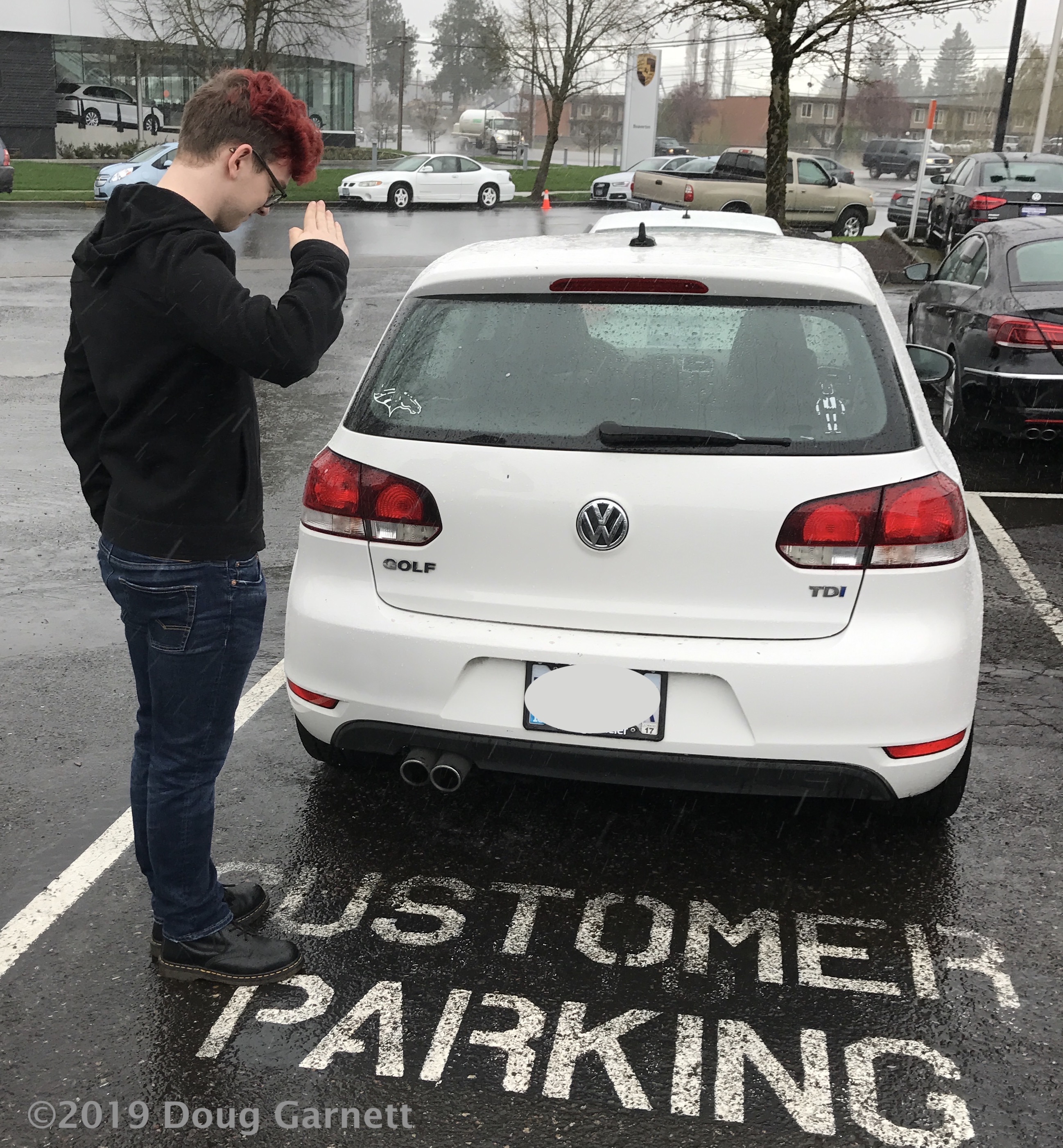Archive
Innovation, Marketing Specs & the Volkswagen Diesel (TDi) Scandal
 Years ago I purchased a white 2011 Golf TDi (the TDi moniker means “turbo-diesel” for those unfamiliar with Volkswagen naming). It had a manual transmission. I bought it for myself also looking for my son to learn to drive a stick (a lost skill among millennials).
Years ago I purchased a white 2011 Golf TDi (the TDi moniker means “turbo-diesel” for those unfamiliar with Volkswagen naming). It had a manual transmission. I bought it for myself also looking for my son to learn to drive a stick (a lost skill among millennials).
My son and I both loved the car — he nicknamed it “the Stormtrooper.” It had a shocking amount of room in the back seat and was tremendous fun to drive — despite low horsepower the torque was incredible.
Unlike my experience with BMWs since 2000, the Stormtrooper really WAS a car for those who love to drive. (BMWs used to offer that experience — like those I drove from time to time in the 1980s and 1990s.)
“Business as Usual” Marketing Fails Another Innovative Product: Titanium Coated Sewing Needles

Detail of maquette for larger work.
Product innovation is the lifeblood of consumer hardgoods companies. And I’ve spent my career using communication to get maximum business impact for innovative products.
So when I hear of an innovation that underperforms in the market because it’s misunderstood my ears always prick up — like when my wife told me about titanium needles for her sewing machine.
Did Dollar Shave Club Hide a Failing Business Behind Investor Success?
#DigitalDumping: the practice of adding a digital veneer to an existing supply chain, pricing below it, losing money and never having a realistic chance of making money, raising more money, raising valuation, and hurting money-making legacy businesses until one of them buys you for an unrealistic valuation, either to get rid of you or to soon realize that they must because the business will never make money.
Shahin Khan, @shahinkhan
There remains an incredible level of chatter about Dollar Shave Club – in no small part because they were bought for a huge amount of money by Unilever.
But is Dollar Shave a success story or #digitaldumping as defined by my good friend Shahin Khan?
Read more…
Latest TiVO Results Illustrate the Impact of Communication Failure
TiVO finances offer a superb example of how early communication failure dooms a new product. Remember, you rarely get a decent second chance. And even if you do, your stumble at the beginning may open the door for rivals to muddy the waters.
And that’s where their failure started. TiVO’s first communication was based around the concept of “pause and rewind live TV” and similar VCR related ideas. As a proud TiVO owner, those ideas are miles away from the real reasons we love our TiVO’s – it reflects a minuscule part of why TiVO matters. Even worse, in advertising it sounds, frankly, quite silly and unimportant. It created a strong fear of meaningless gadgetry rather than a useful perception about the value the TiVO delivers. Read more…
Key to New Product Success: Avoid “Death by Brand Advertising”
Unfortunately, the ad/creative business is obsessed with brand advertising. And, sadly, choosing brand advertising for new products is a leading cause of Shelf Potato-dom. (With the term “brand advertising”, I refer to advertising that spends the bulk of time and energy building brand connections – often by saying either “this brand understand you” or “our brand’s cool will rub off on you if you buy our products”.) Read more…
Eight (8) Reasons Products Sit on the Retail Shelf
Grills nearly identical to George Foreman’s lingered on store shelves for nearly 20 years. Then, the Foreman infomercial blew the doors off driving over $100M in sales in two years. And we learned that while the Grill delivered tremendous value to consumers, no one had known of those benefits or believed it would deliver them.
Not all Shelf Potatoes have potential like the Foreman Grill. Some sit on the shelf because they should. Contributor Ben Smith has noted that the Microsoft Kin was released with massive communication, failed to show unique value, then lingered on the shelf only to be cancelled leaving a black spot on Microsoft’s reputation. Read more…
Snuggie was A Shelf Potato
But they never sold in the volume that the Snuggie has. So what turned Snuggie into a super-hit? Communication.
Yup, those cheesy ads. Love them, hate them, or merely put up with them (because what choice is there?), Snuggie’s advertising drives sales. I guess we needed to see the entire family cheering on their team while dressed in Snuggies (and with their backs uncovered). And without their ads we’d still look at a Slanket on the shelves (if they ever got there) and decide they looked just like … well … a blanket. If you’d run into the Slanket at retail, would you have known why you might want one? (And did they have them in leopard print? Oops. That came later.) Read more…
Suggest Your Shelf Potatoes
This blog is dedicated to the retail challenge we call the Shelf Potato. And, to the opportunity reflected in shelf potatoes.
Because marketing experience shows that products don’t necessarily languish on the shelves because they’re bad products. Quite often they lack the communication support needed to connect consumers with the reasons they should care about the product.
So use the comment space below to post your shelf potato stories and let’s discuss this serious challenge to retail success.
Copyright 2010 – Doug Garnett





